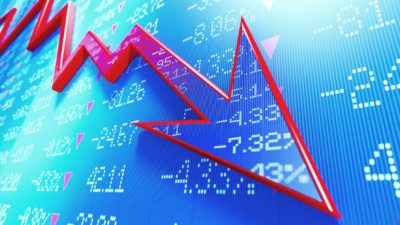This article was originally published on Fool.com. All figures quoted in US dollars unless otherwise stated.
Charlie Munger has called Robinhood (NASDAQ: HOOD) a "gambling parlor masquerading as a respectable business." Its founders have argued that they are democratizing finance for the next generation of investors. Whichever side of the debate you fall on, most agree the trading app is shaking up the retail investing landscape.
Amid the barbs and headlines, its initial public offering (IPO) has revealed many numbers that inform the debate. Here are three that would cause me to think twice before buying shares.
1. More than 50% of customers are first-time investors
This number might be the best argument in favor of Robinhood as a democratizer. If half of its customers are investing for the first time, then the company should be applauded for improving access to the investment world. In fact, there are a few other numbers to bolster that case. The average account size is about $3,500. Compare that to the average account size for E*Trade ($100,000) and Charles Schwab (NYSE: SCHW) ($240,000), and it looks like people who might not have traditionally invested in the stock market are getting involved.
Dig a little deeper, and there are some flaws in the argument. The median account -- the one with the same number of accounts larger and smaller -- is only $240. And they appear to be much more active than at other brokerages. In the first quarter of 2021, Robinhood users made 60% more trades on average than those at Schwab. That disparity is magnified if you normalize for account size. There's a reason for that: The company gets paid handsomely for all of that activity. In its first quarter, 81% of revenue came from selling those orders -- called payment for order flow (PFOF).
While almost all online brokerages do it, Robinhood makes almost 100 times more per dollar in the average customer account than Schwab, according to a report by Alphacution Research Conservatory. None of the likely reasons are good for inexperienced investors. First, users are more prone to trading risky instruments like options contracts and cryptocurrency.
The same report shows almost 90 times the number of options contracts traded for each dollar in the customer account compared to Schwab. The company's own filings show its dependence on cryptocurrency (more on that in a bit) while Schwab, E*Trade, and TD Ameritrade don't even offer it. Those orders are worth more to market makers than simple stock trades.
Second, inexperienced investors might be easier to take advantage of during market volatility. Lastly, those accounts could generate so much money because they trade more. Robinhood uses gamification (elements of game playing) to increase user engagement and prompt more transactions. It's the same way a slot machine is designed to keep patrons pulling the handle. And like the one-armed bandit, people who do it a lot tend to lose in the end.
A recent study by academics at several California universities and the University of Washington showed stocks that are extremely active on Robinhood experience a price spike and then a sharp reversal -- a classic sign of speculation. A different study by academics at the Sao Paulo School of Economics and the University of Sao Paulo examined 1,600 Brazilian day traders. It found that only 1% of them made more than minimum wage. The app's most important role might end up being to teach a new generation of investors what not to do.
2. Seventeen percent of revenue is generated from cryptocurrency
In its IPO filing, Robinhood stated that 17% of its Q1 revenue this year was derived from cryptocurrency trading. That's up from just 4% last year. Notably, more than one-third of that was related to Dogecoin (CRYPTO: DOGE). Doing the math, that means 6% of the company's entire revenue was the result of an asset that traded for one-fifth of $0.01 less than a year ago. In total, crypto assets traded on Robinhood grew 24-fold year over year to $11.6 billion.
It's amazing growth but hardly sustainable. Over that 12-month period, the price of Bitcoin (CRYPTO: BTC), Ethereum (CRYPTO: ETH), and Dogecoin climbed 490%, 1,820%, and 10,800%, respectively. Cryptocurrency remained volatile in the second quarter, so the company's next earnings report might convince Wall Street that the company can keep it up. But crypto volumes reportedly fell 43% in June. Without continued asset appreciation and trading activity, it's hard to see this large chunk of the company's revenue persisting.
3. The company recently paid $70 million in fines
The penalty was a settlement with the Financial Industry Regulatory Authority (FINRA) for providing false and misleading information to its customers, as well as allowing them to partake in especially risky trading behaviors. Other charges included failing to tell customers how it made money and not obtaining best-price execution for their orders. The fines haven't dented its ambitions.
Co-founder Vlad Tenev has said the company is considering offering retirement accounts and sees evidence that the majority of its customers practice a buy-and-hold investing strategy. It's hard to make that case with the data that has been made public. It is a natural next step for Robinhood, but it might entice people to bring more of their money into the proverbial casino. It's one thing to actively trade with $240; retirement accounts are a different story. After the previous fines and current review of PFOF by the Securities and Exchange Commission (SEC), I wouldn't expect to see a Robinhood IRA anytime soon.
There are two sides to every story
Despite the red flags, the company has done some good. It is largely responsible for the industry adopting $0 trades, and it's hard to argue that it hasn't opened investing up to more people, especially people who might never have invested before. For that, it deserves praise. It even sold about 25% of its IPO shares to its own customers. But like so many other numbers, they can be interpreted in different ways.
The company went public at the low end of its projected price range and was reportedly having trouble getting institutional investors to buy shares. The two founders each sold nearly $50 million worth. Although together they continue to own about 16% of the company, inexperienced investors might get the short end of the stick buying shares that much of Wall Street passed on. Deciding to invest in a company is a personal decision, and there are a lot of different reasons to choose one over another. These numbers are three reasons that keep me from making a bet on Robinhood.
This article was originally published on Fool.com. All figures quoted in US dollars unless otherwise stated.









